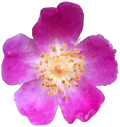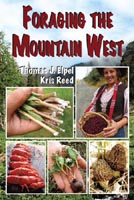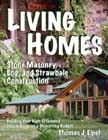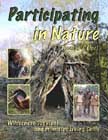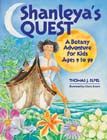
Poaceae (Gramineae)
Plants of the Grass Family
We do not normally think of the grasses as flowers, yet they are. They only lack the showy petals and sepals because they are wind pollinated and do not need to attract insects. The flowers typically have 3 (rarely 2 or 6) stamens. The ovary consists of 3 united carpels (syncarpous/tricarpellate), forming a single chamber. It matures as a single seed called a caryopsis (grain) or rarely an achene (a dry seed) or a berry. The flower is contained by modified leaves called bracts. These are the chaff that is later winnowed out of harvested grain. Worldwide, there are about 600 genera and 10,000 species of grass. About 230 genera and 1,000+ species appear in North America.
All of our cereal grains belong to this family, including wheat (Triticum), rice (Oryza), wild rice (Zizania), corn (Zea), oats (Avena), barley (Hordeum), millet (Echinochloa) and rye (Secale). The seeds of virtually all other grasses are also considered edible, if they are not infected by the ergot fungus. A notable exception is rye grass (Lolium), which is used as a sedative and vasodilator. It is considered poisonous in excess (Lust). Although most grass seeds are edible, they are not all necessarily economical. Some seeds are too small, or otherwise difficult to process into a useable product. For instance, the very small seeds can be difficult to digest. They can be too small to grind on a metate or too small to swell and turn to mush when cooked as a hot cereal. The best grasses to work with are those with big seeds, much heavier than the surrounding chaff. This makes it easier to blow the chaff away, while keeping the seeds.
There are three main techniques of harvesting cereal grains with crude implements. One method is to simply strip the whole seed heads by hand, collecting the material in a container. Another method of harvesting is to beat the seed heads with a stick, while catching the seeds in a pan or tarp. The third method is to cut the whole stalks, place them on a tarp, then beat the seeds out. The plants can be dried on the tarp to make the seeds drop more easily.
The next step in the process is to break the seeds free from the chaff. Rubbing the rough material between the palms is sufficient for most grains. Some seeds, however, are encased in a husk that is impossible to rub free of the grain. These seeds are ground up, husk and all, for a high-fiber cereal. Also, a few grass seeds can be parched and then rubbed to remove the husk. Grasses that are hairy or sharp should be avoided, as they could cause irritation or injury to the throat.
Winnowing is the next step. This removes the chaff once it is broken free of the seeds. Winnowing is a little like gold-panning, where you catch the weighty metal and wash the lighter debris away; in fact, I recommend using a gold-pan for this process. Swirling the pan and occasionally tossing the grain lightly into the air brings the light chaff to the surface, so it can be blown away.
Another commonly used method is to toss the rubbed material into the air, such that the seeds will fall straight down on a tarp, but a light breeze will carry the chaff away. I have not had good results with this method, so I prefer the gold-pan/blowing technique, where I can precisely control the flow of wind. In either case, you will not be able to completely clean out the chaff. There is always some left. That is okay. It is good roughage for the digestive system.
Key Words: Grassy plants with knee-like nodes on the flower stems.
Please e-mail Thomas J. Elpel to report mistakes or to inquire about purchasing high resolution photos of these plants.
